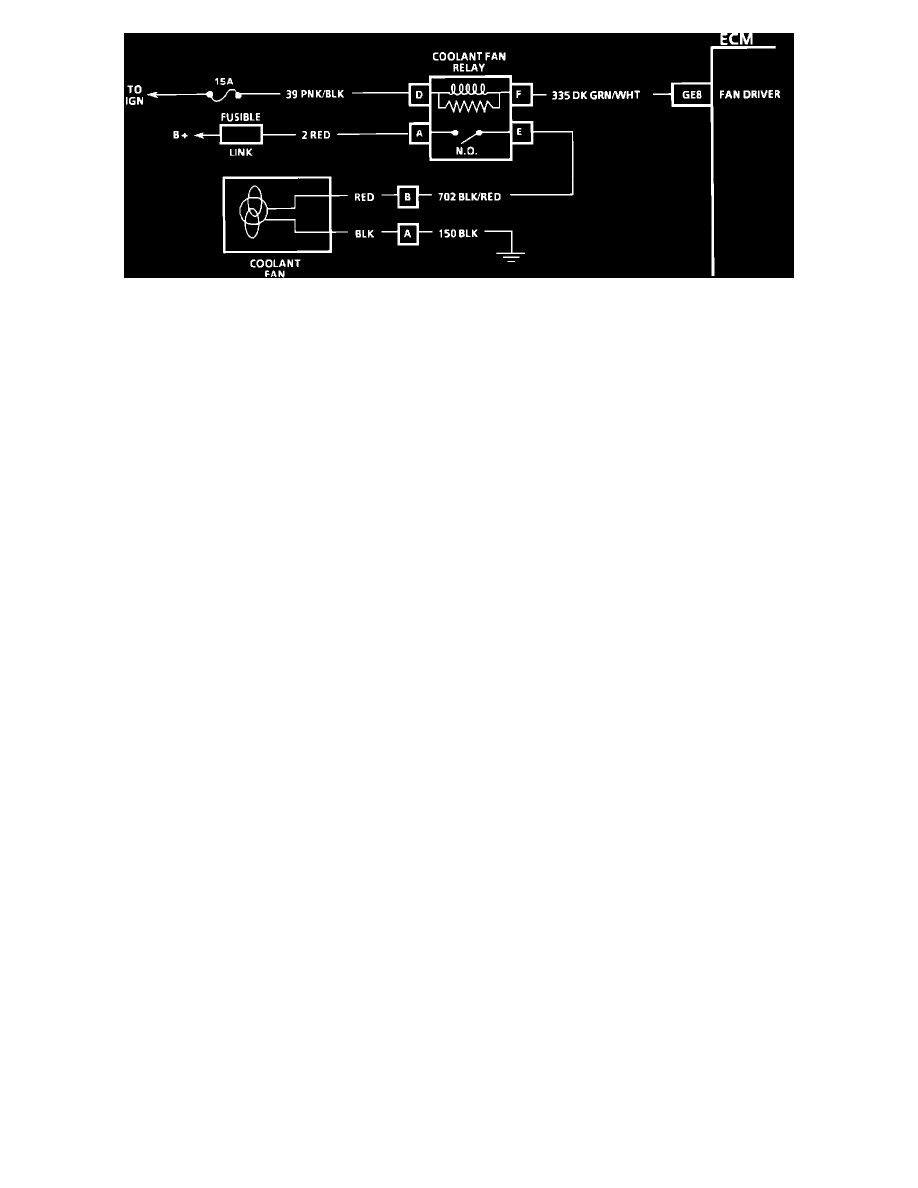Beretta L4-138 2.3L DOHC QUAD 4 (1991)

Chart C-12 Wiring Diagram
CIRCUIT DESCRIPTION:
The electric coolant fan is controlled by the ECM through the fan relay based on inputs from the coolant temperature sensor, manifold air temperature,
the A/C control switch, A/C pressure sensor and the vehicle speed sensor. The ECM controls the coolant fan by grounding CKT 335 which turns "ON"
fan relay.
The fan relay will be commanded "ON" when:
^
Coolant temperature 103~C - 106~C (217~F - 220~F) or more.
^
A/C clutch requested.
^
Vehicle speed is less than 35 mph.
The fan relay will be commanded "ON" regardless of vehicle speed if:
^
Code 14 or 15 are set.
^
Coolant temperature 115~C - 118~C (239~C - 242~F) or more.
^
A/C pressure is high.
The coolant fan may be commanded "ON" when the engine is not running.
TEST DESCRIPTION:Numbers below refer to circled numbers on the diagnostic chart.
1.
With the field service mode activated, the coolant fan control drivers will close, which should energize the fan control relay.
2.
Test to see if fault is in wiring to the fan or the fan/relay connection.
DIAGNOSTIC AIDS:
^
If the owner complained of an overheating problem it must be determined if the complaint was due to an actual boil over, or the "hot light," or
temperature gage indicated overheating.
^
If the gage, or light, indicates overheating, but no boil over is detected, the gage or light circuit should be checked, The gage accuracy can also be
checked by comparing the coolant sensor reading using a "Scan" tool with the reading of the gage.
^
If the engine is actually overheating, and the gage indicates overheating, but the coolant fan is not coming "ON", the coolant sensor has probably
shifted out of calibration and should be replaced.
^
If the engine is overheating, and the coolant fan is "ON", the cooling system should be checked.
